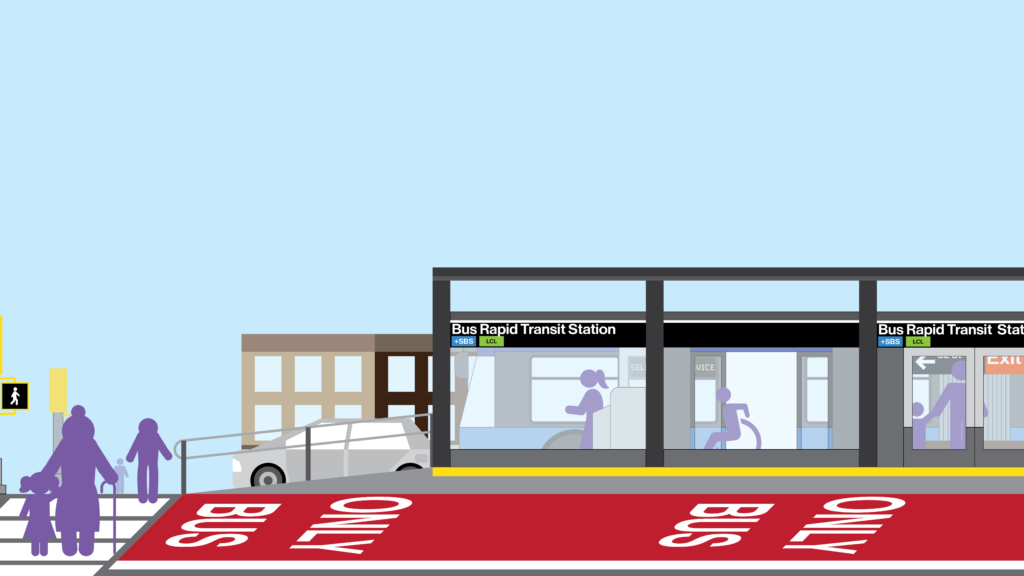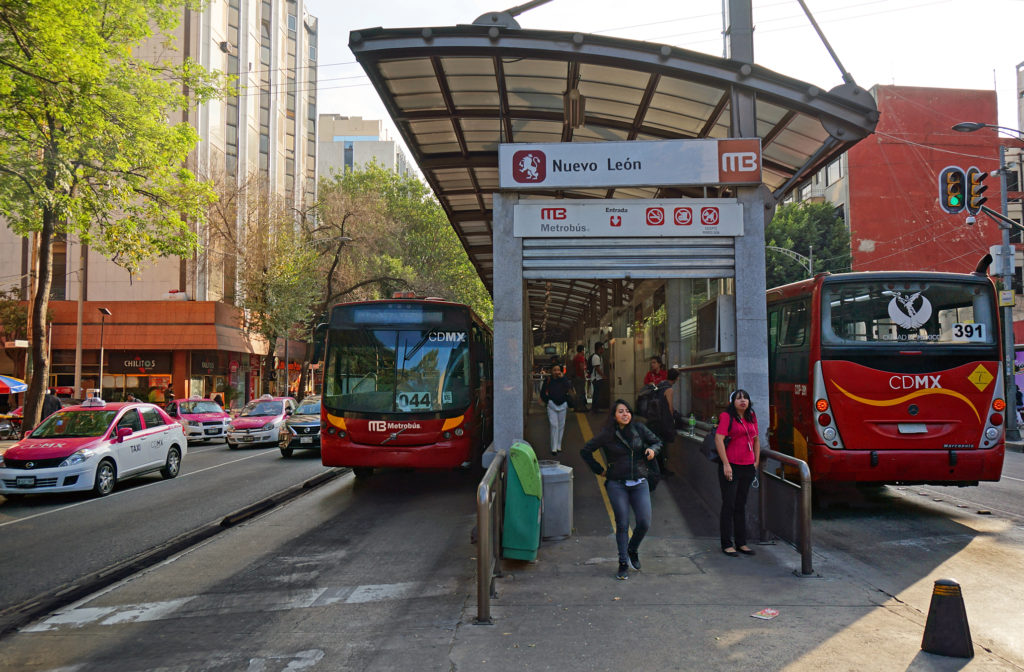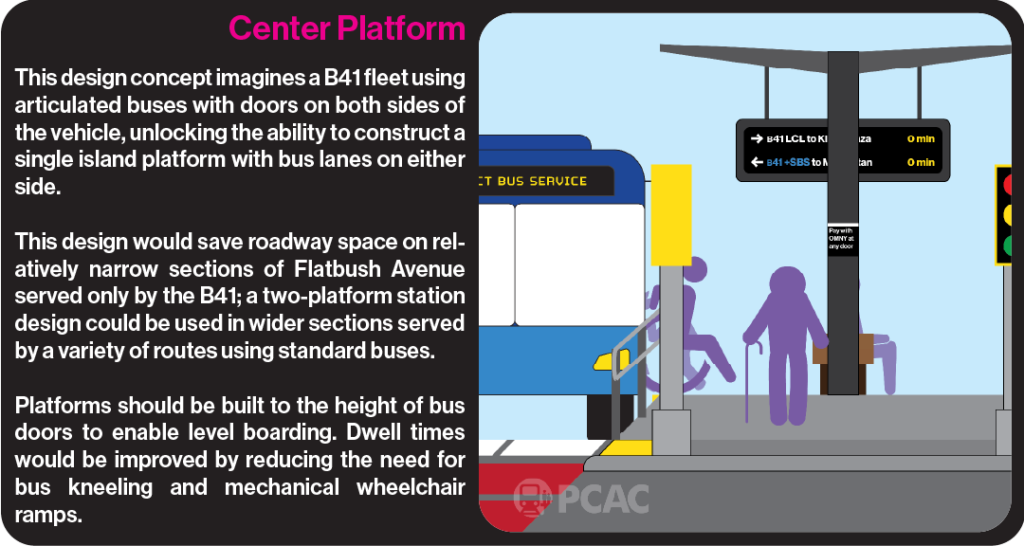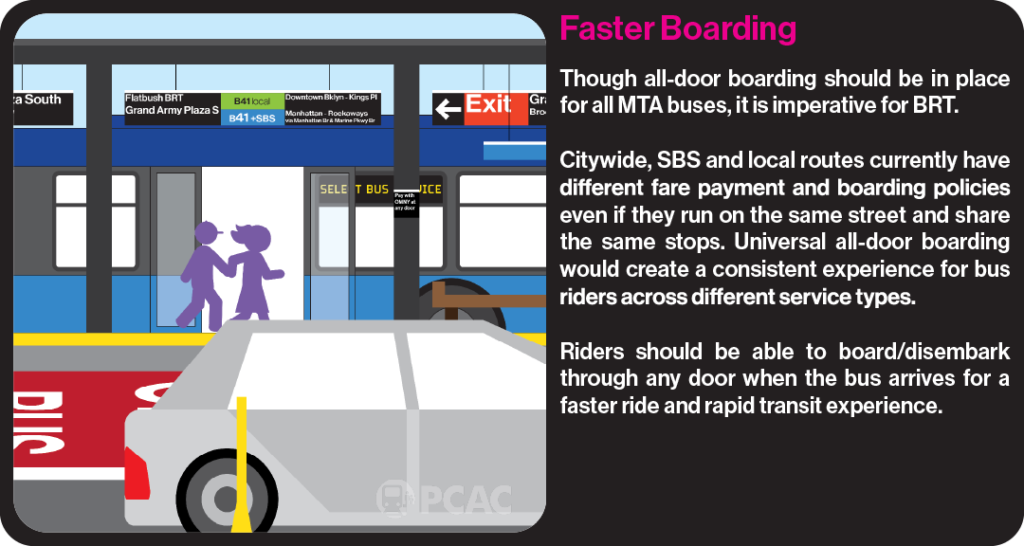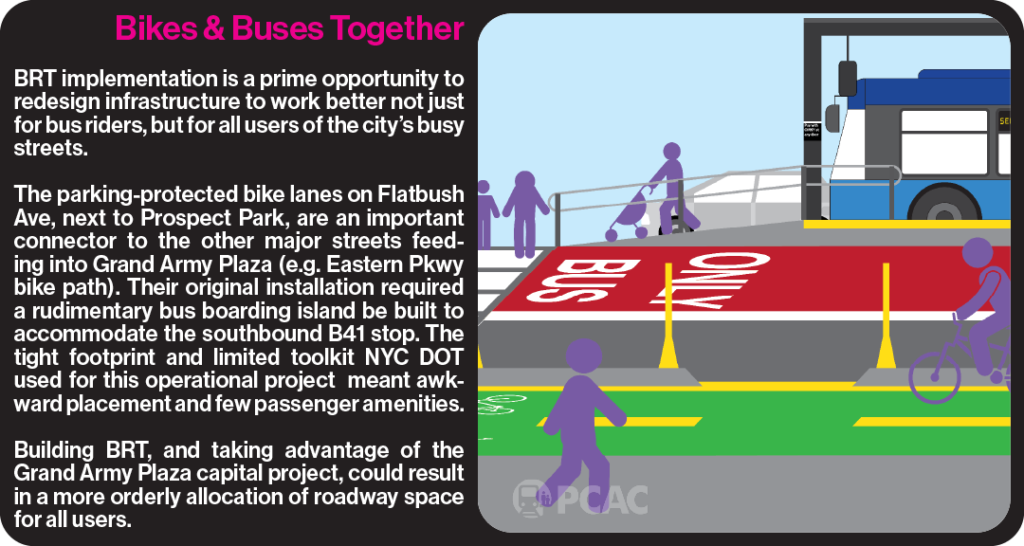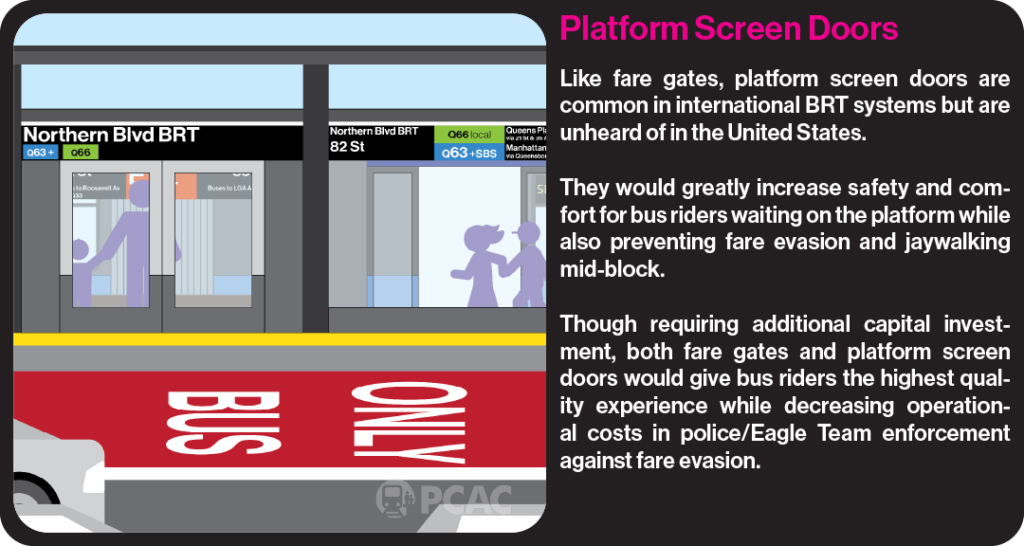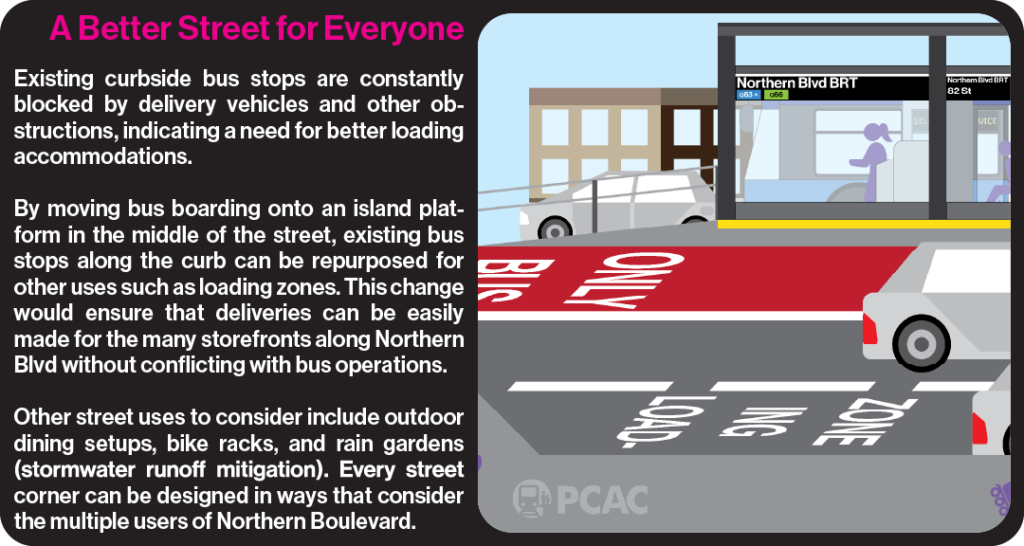Bus rapid transit (BRT) is a concept unfamiliar to most New Yorkers used to riding the nation’s slowest buses. Yet it is a tool that New York City can use to bring key, high demand corridors up to the standard that dozens of other cities have already reached — or, better put, the standard that bus riders around the five boroughs deserve. BRT differs from a standard bus network by incorporating: protected bus lanes; priority at intersections; off-board fare payment; accessible level boarding; and other key elements on stretches 1.9 miles and longer, to achieve a true, uninterrupted rapid transit experience for bus riders. Some of these elements can now be found individually in Select Bus Service (SBS), but not to the same extent or standards as BRT.
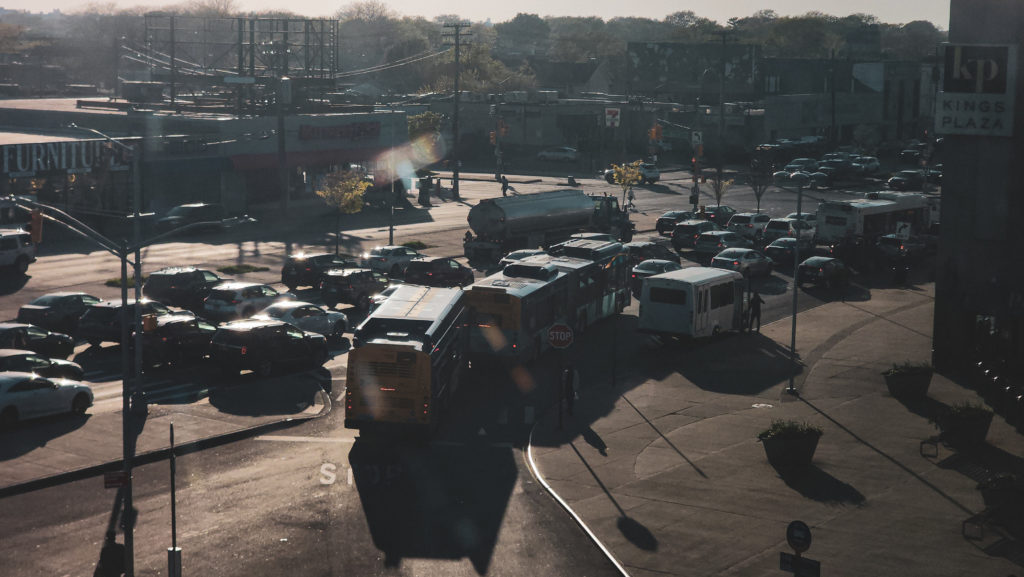
Despite being the largest and highest ridership system in the country, New York City’s buses are also some of the slowest, plagued by record traffic, inadequate on-street infrastructure, and outdated transit policies. In many cases, they are slower than walking; buses run by the Metropolitan Transportation Authority (MTA), excluding express buses, ran at an average speed of 7.8 mph in 2024, while SBS routes averaged 9.2 mph. Although Congestion Pricing has improved bus speeds in the Congestion Relief Zone, overall, the benefits for bus riders are not yet far reaching enough in the rest of the city.
Both the MTA and New York City Department of Transportation (NYC DOT) have implemented desperately needed initiatives to provide better service to bus riders. These programs have individually and collectively helped increase bus speeds and reduce repeat offenders, but none of these initiatives have yielded true BRT:
- Select Bus Service incorporates farther stop spacing, all-door boarding, and generally uses longer three-door articulated buses. SBS routes exist within the larger bus network and often have local counterparts making more frequent stops.
- Borough Bus Network Redesigns are comprehensive reviews and as-needed overhauls of MTA bus routes, on a borough-by-borough basis, to better reflect the needs of today’s bus riders. As of this writing, only the Bronx redesign is complete, with Queens Phase 1 in effect and Phase 2 following later this summer, and Brooklyn about to undertake next steps.
- Bus Priority Projects are redesigns of city streets with the goal of improving bus service using a toolkit developed by NYC DOT, including bus lanes and busways. Most are lanes along the curb or offset by parking, doing little to improve the accessibility of bus stops and facing constant blockages. Center-aligned bus lanes are standard in international BRT systems, yet exceedingly rare in New York. Augmenting traditional traffic agents, the Automated Camera Enforcement (ACE) program targets vehicles blocking bus stops and improperly using bus lanes.
However, successful case studies from around the world show that there is a path to addressing the shortcomings of New York City’s busiest buses. Policymakers in cities like Bogotá, Buenos Aires, Cleveland, Curitiba, Guangzhou, and Mexico City have all designed BRT differently in ways that consider their riders, larger public transit network and urban environment. It is time for all of the parties responsible for ensuring that New Yorkers have quality bus service to get on board with the single goal of improving the lives of millions who rely on buses in the five boroughs — which are served by an extensive, yet Manhattan-centric subway system, and showing high demand for rapid transit within and between the other four boroughs.
To implement BRT that is up-to-par with international standards, New Yorkers need a system that is fast, frequent, reliable, accessible, and easy to use. Although this report identifies Flatbush Avenue, Brooklyn and Northern Boulevard, Queens as two key places for possible implementation, the following suite of recommendations should be used together to create a cohesive network of BRT for underserved neighborhoods across the boroughs:
- Install protected bus lanes aligned to the center of streets, avoiding the chronic issues that block New York’s existing curbside and offset bus lanes.
- Continue implementing technology innovations to speed up buses, such as transit signal priority, and other intersection safety tools such as left turn bans and queue jumps when necessary.
- Build accessible BRT stations with level boarding, full shelters, clear signage, lighting, seating and countdown clocks. Strengthen coordination between MTA & NYC DOT to deliver higher-quality and more effective bus priority projects in compliance with the legal mandates of the NYC Streets Plan.
- Overhaul signage and wayfinding by adopting a recognizable and unified design language for wayfinding at BRT stations. Integrate BRT into the subway map to improve wayfinding for riders.
- Pilot a new bus fleet with doors on both sides to enable construction of bi-directional island platforms, a standard design on most international BRT systems.
- Reform boarding and fare payment by enabling all-door boarding and piloting fare gates at BRT stations to speed up service and reduce fare evasion.
- Launch the next generation Select Bus Service as BRT by upgrading existing infrastructure, extending existing SBS to better connect Manhattan’s Congestion Relief Zone with the boroughs outside of Manhattan, and launching new interborough SBS by using this report’s suite of recommendations in tandem with one another.
BRT in New York City is more than just possible — it’s a necessary goal for NYC’s bus mayor. For a more sustainable and transit-driven future, there must be more commitment to better coordinated efforts between the MTA and NYC DOT, whose most recent update to the Streets Plan states the agency’s desire to “work with the MTA to plan — and fund — the next generation of major transit capital investments, including subway, rail, and bus rapid transit.” Through this report’s recommendations and proper investment, PCAC is confident that the next generation of Select Bus Service can achieve the bus rapid transit standards that New Yorkers from all five boroughs deserve.
BRT Design Concepts
What could the next generation Select Bus Service feasibly look like? This report focuses on design concepts and the ways they could address current issues on two key corridors: Flatbush Avenue, Brooklyn and Northern Boulevard, Queens. Both are long, uninterrupted main roadways which span practically the entirety of their respective boroughs and are currently without SBS. Though these are just two instances where BRT could be immensely beneficial, they are far from the only possible use cases. PCAC encourages New Yorkers to think of these general concepts as an adaptable toolkit; exact implementation should aways be responsive to the needs of riders and surrounding neighborhoods.
Flatbush Avenue (at Grand Army Plaza South)
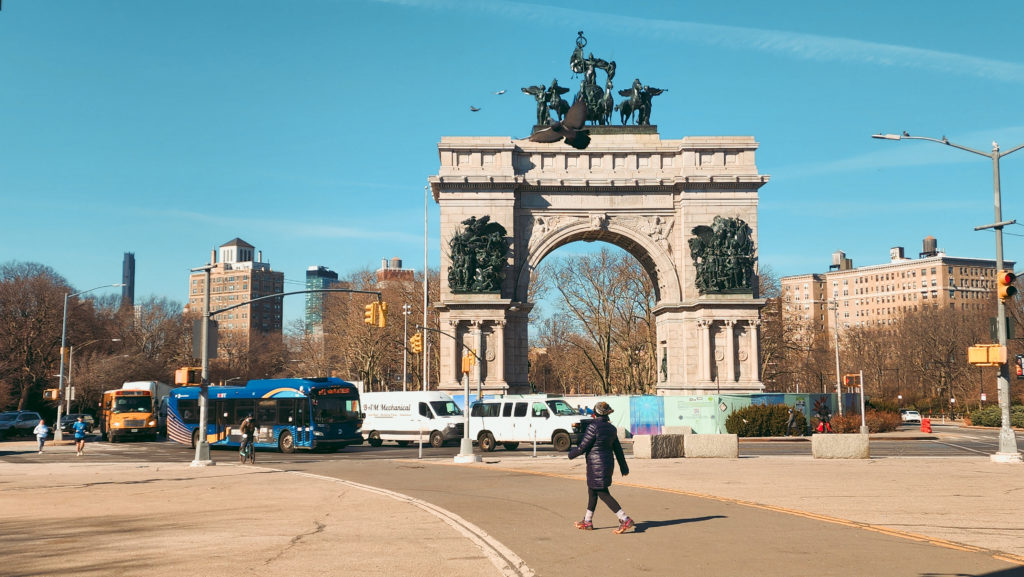
Grand Army Plaza is an important connector for people walking, biking, driving, and riding the bus alike. 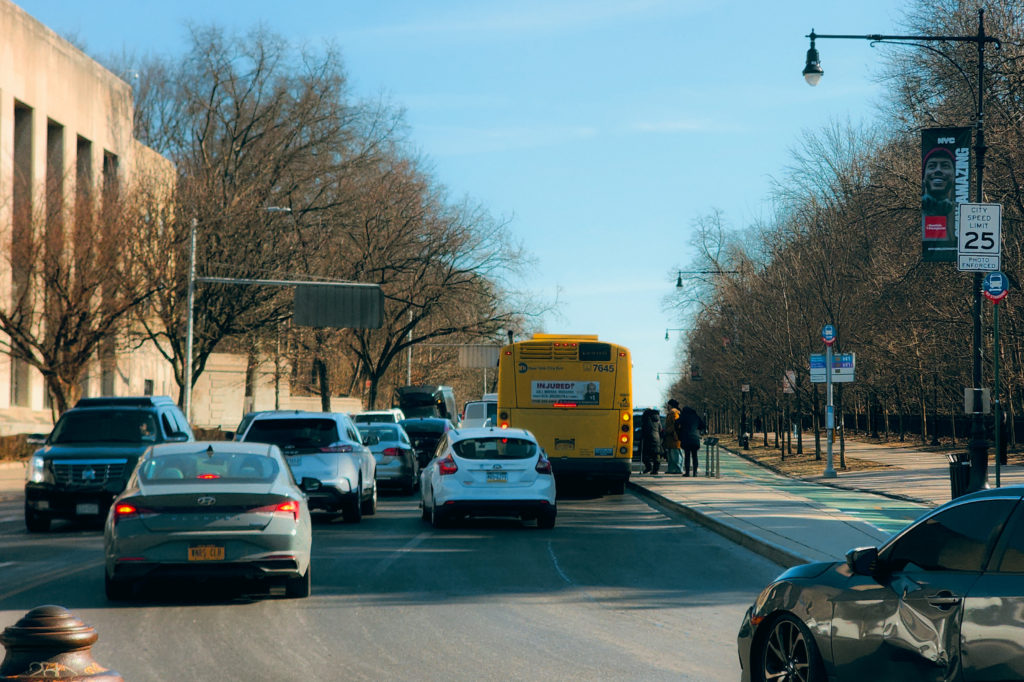
The B41 ran at an average speed of 6.8mph in 2024. 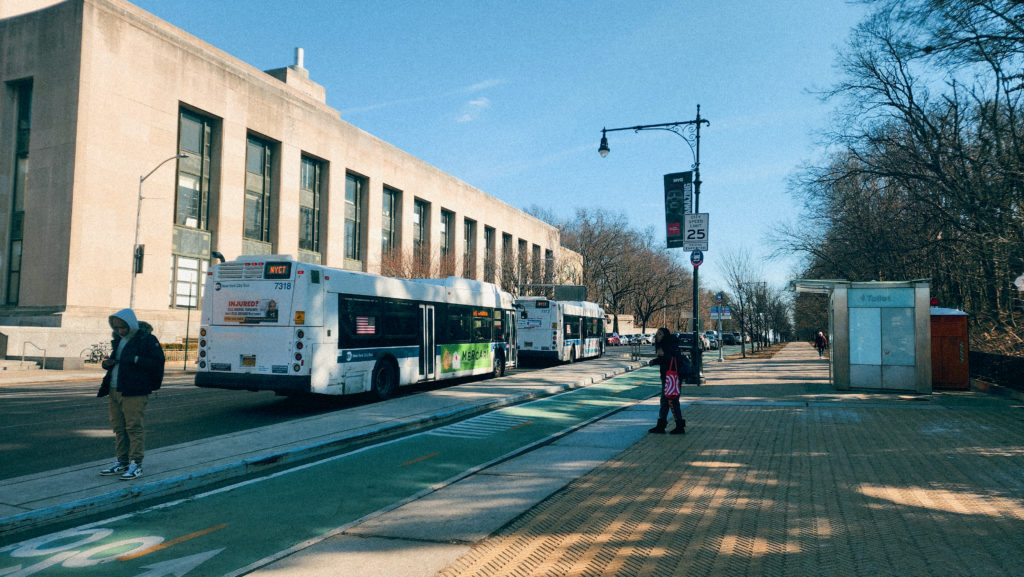
Bike lanes on Flatbush Ave next to Prospect Park required relocating southbound B41 stop onto boarding island. 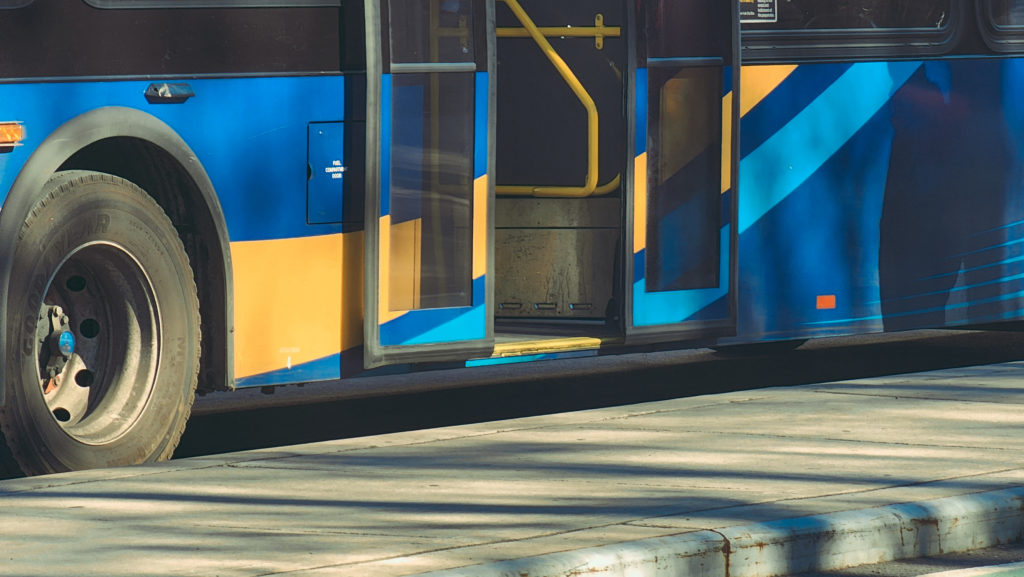
The bus boarding island does not reach door level. 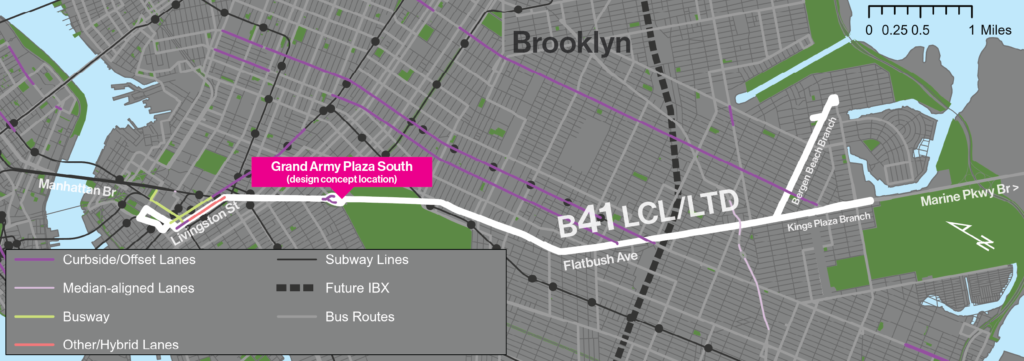
Existing B41 route overview.
This design concept focuses specifically on what BRT could look like at Flatbush Avenue on the southern end of Grand Army Plaza. Flatbush Avenue varies greatly in roadway width from section to section, meaning the design of bus lanes and stations would likely vary as well. The existing B41 limited would be upgraded to SBS and could potentially be extended on both ends to Canal Street (Manhattan) and Rockaway Park (Queens), reducing the need for subway transfers for many riders. In doing so, the B41 SBS would enable a one-seat ride across three boroughs while the B41 local can take advantage of the same BRT infrastructure for faster inter-neighborhood connectivity along its existing route. Feasibility of inter-borough SBS via Flatbush Avenue hinges on whether the on-street infrastructure is designed/enforced effectively and on the continuation of Congestion Pricing, which has significantly reduced traffic in Lower Manhattan and across the Manhattan Bridge.
Northern Boulevard (at 82nd/83rd Street)
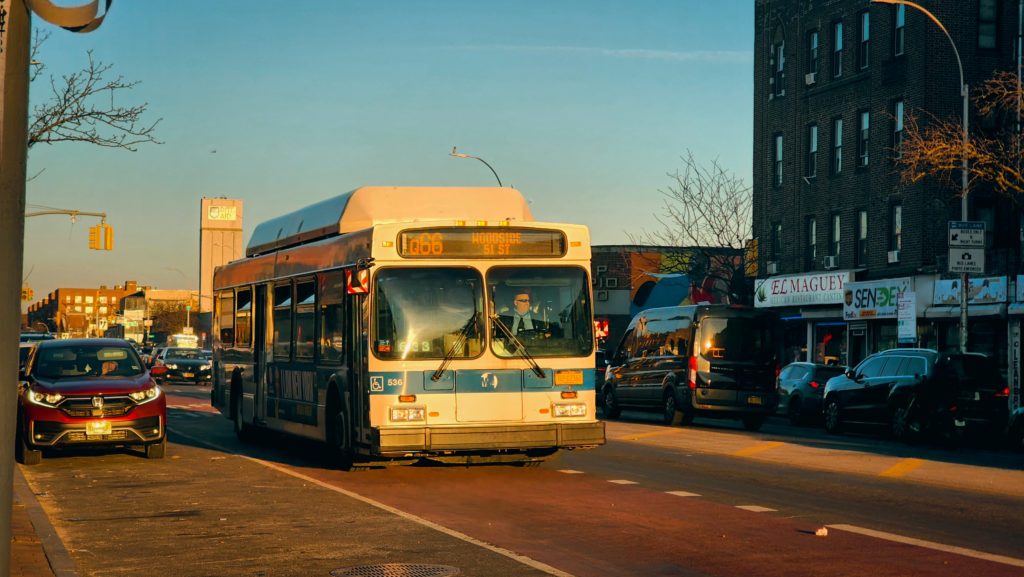
The Q66 ran at an average speed of 8.1mph in 2024. 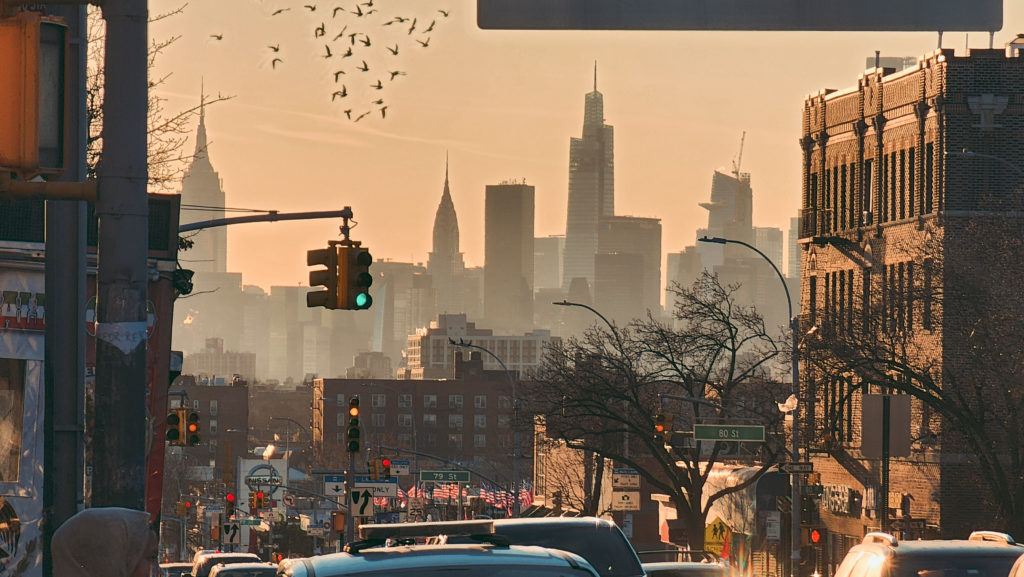
The upcoming Q63 isn’t planned to run over the Queensboro Bridge to take advantage of the Congestion Relief Zone. 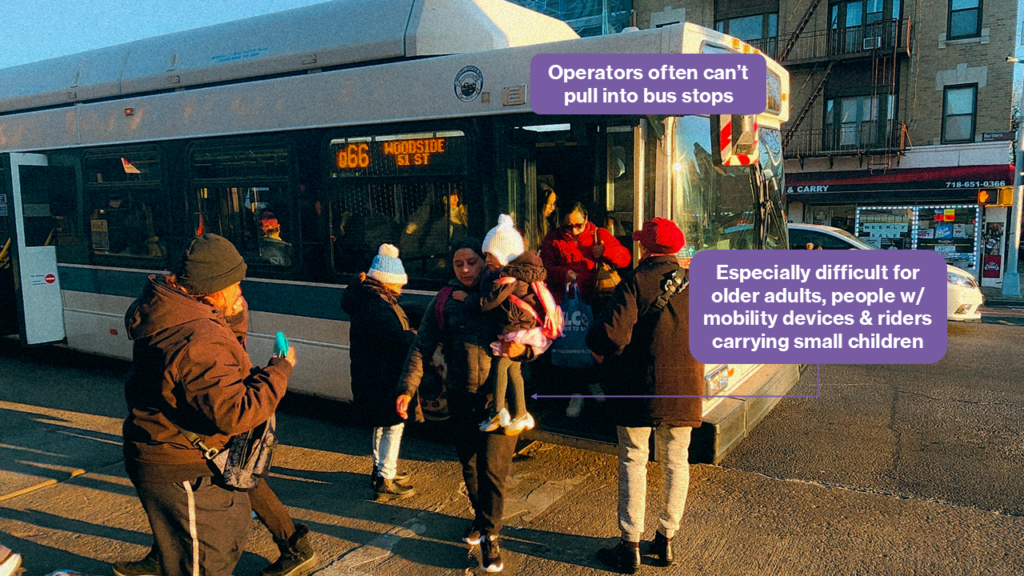
Riders often have to board/disembark through mixed traffic. 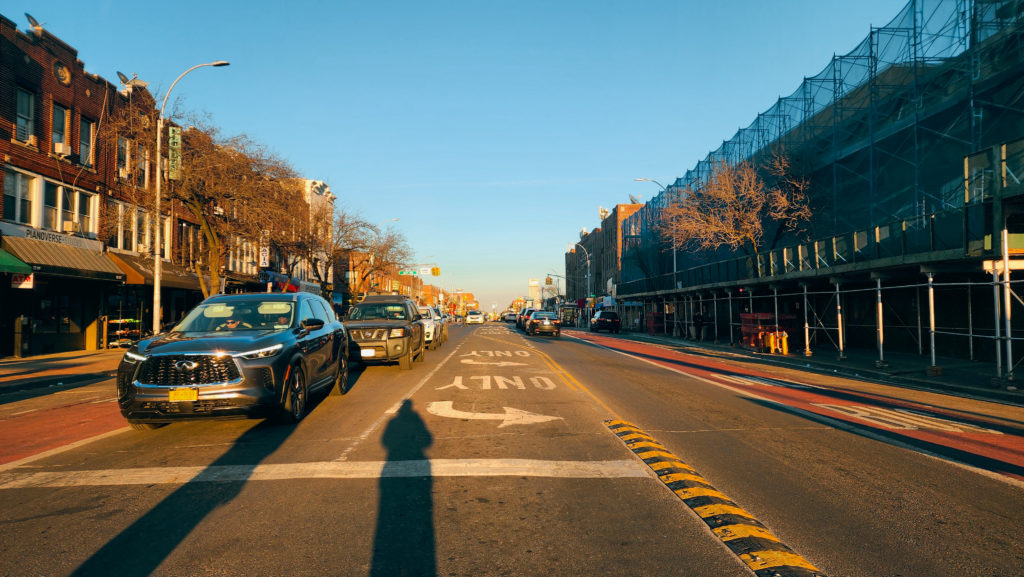
NYC DOT installed offset bus lanes in 2023. 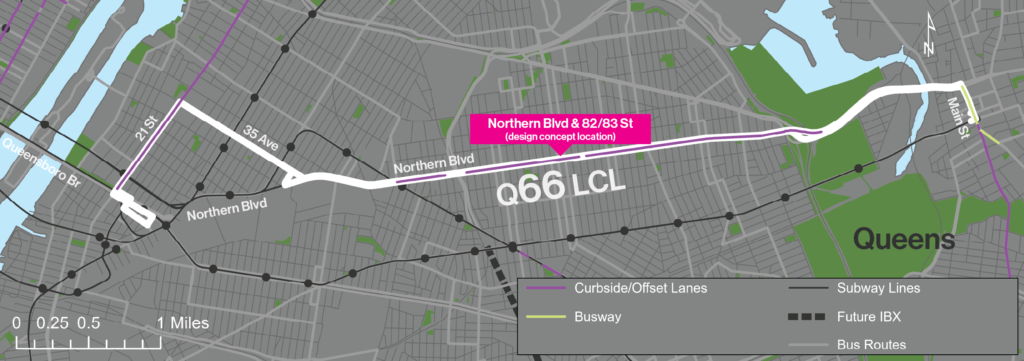
Existing Q66 Route Overview
Unlike Flatbush Avenue in Brooklyn, which varies widely in roadway width from section to section, Northern Boulevard is relatively consistent in road layout and thus a streamlined BRT design can be more feasibly implemented. Though these pages focus on the block between 82nd and 83rd Streets in Jackson Heights, the characteristics of this specific location are applicable to most of Northern Boulevard. This design concept imagines an articulated bus fleet with doors on both sides of the vehicle, unlocking the ability to construct a single island platform with bus lanes on either side. Riders of the Q63 and Q66 would use the same stations built in the middle of the roadway, currently occupied by a yellow-striped median and left turn lanes at a few intersections. Fare gates and platform screen doors, unprecedented among BRT systems in the United States, are ideal solutions for speedy off-board OMNY payment and fare evasion mitigation. The upcoming Q63 route could be further upgraded to Select Bus Service and extended across the Queensboro Bridge into Manhattan, greatly reducing the need for bus riders to transfer to the subway in Queens.
